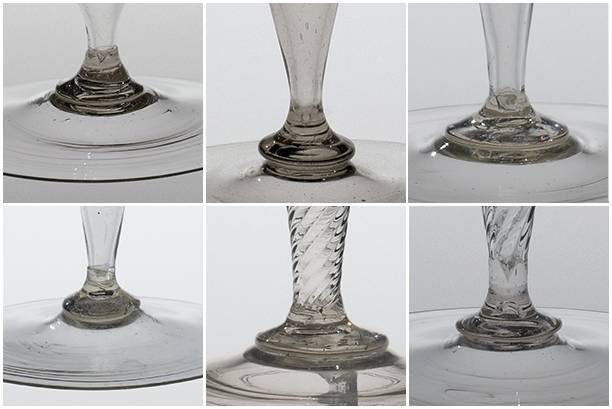Shape of Merese at Bottom of Stem
Renaissance
Usually has a tubular upper portion to better grip the stem; merese is often sculpted to enhance the form of the stem
19th Century
Usually localized at the tip of the stem; usually purely functional in appearance

Venetian goblet made after 1860, showing increase in wall thickness of lowermost stem, where the diameter is reduced; also showing “chicken-leg” form of stem, and attachment of foot to edge of merese. The Corning Museum of Glass (66.3.64).
